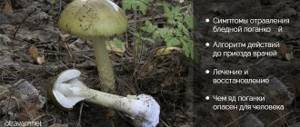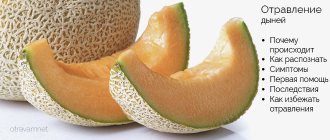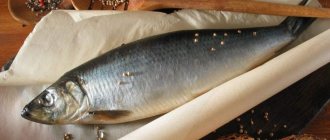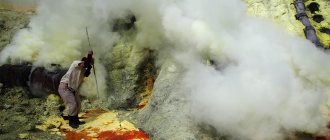Milk mushrooms are mushrooms, the beneficial and poisonous properties of which have been the subject of much controversy and debate.
Residents of Rus' always collected these mushrooms in huge quantities and salted them for the winter, while in European countries no one ate milk mushrooms, considering them simply inedible. As it turned out, mushrooms are conditionally poisonous, and therefore they should be treated with vigilance and caution, since improperly prepared or processed milk mushrooms can bring many negative consequences. There are more than twenty varieties of milk mushrooms, which have their own specific characteristics and have certain characteristics that need to be researched. So, experts classify edible species as:
- white milk mushroom, or as it is also called, real. It is the most popular, as it is significantly superior to its counterparts in taste. The breast has a cap, which can exceed 18-20 cm in diameter, and flesh that is quite dense for mushrooms. In addition, the smell of the mushroom is very reminiscent of fruit, which gives reason to believe that this species is not poisonous. You can eat mushrooms only after a long soaking (48-50 hours), during which the water must be changed every 4-5 hours;
- black milk mushroom, which can have a cap of either dark or green color. The mushroom can be found under birch trees and coniferous trees such as pine, thuja and others. This species is often used for pickling, as black milk mushrooms can remain tasty and aromatic for three years;
- aspen milk mushroom is a species that has a rather specific appearance, since the cap is presented in light shades (white, cream), and the color of the plates can be either dirty pink or orange;
- yellow milk mushroom is a mushroom that looks very similar to the real one (white milk mushroom). Probably the only difference is that the cap can be golden in color;
- red oak mushroom is a mushroom with a yellow cap, which can sometimes have a reddish tint.
However, despite the fact that such mushrooms are considered edible, they must be properly processed. Most often, milk mushrooms are salted for the winter, not paying attention to the fact that there are special salting rules that must be strictly followed. Firstly, before using, the mushrooms need to be soaked, constantly changing the water. Secondly, milk mushrooms should be salted for up to 50-60 days, depending on the type.
We should not forget about the inedible types of milk mushrooms, which, although they are few in number, pose a great danger to humans and can cause poisoning. The following mushrooms are classified as false milk mushrooms:
- pepper mushroom, which can be either white or cream in color. A specific feature is that it contains milky juice inside, which flows out when cut and changes color when interacting with air when interacting with air. This species is difficult to confuse with other milk mushrooms, as it has a bitter, almost burning, taste. In addition, the flesh is too hard, which makes the mushroom inedible. Some people specifically choose such milk mushrooms, dry them thoroughly and grind them into powder, which is then used as a seasoning;
- violin is a mushroom similar to a real milk mushroom, which is also white in color. The cap of this species can be either yellow or brown, and the flesh has a pleasant smell. The milk mushroom also has juice that turns red some time after flowing out. It’s quite easy to recognize this mushroom: just run a knife (preferably wet) across the cap, which will result in a kind of creaking sound;
- camphor mushroom, which is rightfully considered the most poisonous of the family. It has a peculiar smell that changes with age from camphor to coconut. The danger is that harmful substances do not disappear even after prolonged soaking and high-quality heat treatment.
Poisoning is caused by both false milk mushrooms and edible ones. Therefore, you should be careful and adhere to established safety rules when processing. It is important to be patient and wait enough time until the mushrooms are well salted. Is it possible to get poisoned by milk mushrooms? Of course, moreover, this is inevitable if the mushroom pickling process is not organized correctly.
Varieties of milk mushrooms
In Russia they are not considered safe mushrooms, although they do not have poisonous counterparts. They are classified as conditionally edible mushrooms, which must be soaked before pickling. As a result of prolonged washing, the poisonous milky juice is removed. After consumption without salting and insufficient pre-washing, they cause short-term symptoms of milk mushroom poisoning - diarrhea and vomiting.
In Western countries, milk mushrooms are considered inedible.
Attention! It is recommended to prepare any dishes made from milk mushrooms using salted mushrooms.
White milk mushroom
It is considered the “king of mushrooms”, having the best taste. The cap of a young specimen is white, but as it matures it becomes yellowish in color.
To prevent poisoning from salted milk mushrooms, before salting, white species are pre-soaked for 2 days, changing the water every 4 hours. Canned food is ready for consumption after 1.5–2 months. If salted milk mushrooms are bitter, what to do:
- rinse with cold water,
- add vinegar, onion, sunflower oil.
Spices correct the taste, eliminating bitterness.
Yellow milk mushroom
The main difference between the yellow mushroom and its white counterpart is the absence of fringe along the edge of the cap. They grow in damp places - near ponds, dead wood, in moss. The concave funnel-shaped cap collects water. Yellow specimens are suitable for pickling.
Black milk mushroom
The color of the chameleon mushroom cap varies from olive to dark brown. The grayish pulp secretes milky juice. Nigella rests on a short stalk. Black milk mushroom grows up to 25 cm in diameter. Until recently, it was considered the best option for pickling. At the end of the 20th century, it began to be considered a poisonous mushroom due to its mutagen content.
Oak milk mushroom
The mushroom was named after its favorite place of distribution in deciduous forests. It is collected near beech, hazel, and oak. The flat cap has a bright reddish or brick color. The pulp has a pleasant pinkish tint.
What mushrooms are similar to milk mushrooms?
There are mushrooms that look like milk mushrooms. False mushrooms are not used in cooking, but some mushroom pickers use them after thorough soaking and pickling. Milk milk mushrooms are considered false, but conditionally edible:
- Squeaky or dry mushroom. It stands on a short leg, almost completely rooted in the ground. The violin is used for pickling. You can identify it in the forest by the grinding sound of the cap rubbing against the surface of the teeth.
- Milkweed or camphor milk mushroom. It is distinguished by a brown concave cap with a wavy edge. The characteristic smell of camphor oil does not attract mushroom pickers.
- Peppery look. Found in deciduous and mixed forests. The acrid pulp tastes like pepper. When broken, the surfaces quickly darken to an olive green color. They are consumed only salted after prolonged soaking.
The edible false mushroom disguises itself as a white milk mushroom. It can be recognized by the viscous, bitter, milky liquid that is released when the cap is broken. It is edible if soaked for a long time and then boiled well.
Why did spruce and pine saffron milk caps turn blue when salted?
Spruce and pine saffron milk caps may turn blue during the pickling process due to the fact that too many spices are added to them. This is what can cause a significant color change. Other types of fruiting bodies can be pickled with a lot of spices, but not saffron milk caps. It is better to always salt these mushrooms with a minimum amount of spices, using one preservative - salt.
If salted saffron milk caps turn blue, can you eat them or is it better not to? As already mentioned, the blueness of the fruiting bodies does not indicate spoilage, which means they can be consumed without any fear.
The benefits of milk mushrooms
From such gifts of nature as salted milk mushrooms, the harm and benefits are determined by the incoming substances. Benefits of salted milk mushrooms:
- the amount of protein is equal to meat,
- contain vitamins C, A, group B, PP, D and minerals - potassium, magnesium, calcium, phosphorus,
- do not affect blood glucose levels, which means they are used in the diet of diabetics,
- Pharmacologists use white and black milk mushrooms to create drugs,
- pepper milk is used in the production of lactarioviolin, necessary for the treatment of tuberculosis,
- Mushroom extract is used in the treatment of cholelithiasis and urolithiasis.
Mushrooms are used in vegetarian diets to compensate for protein deficiency. 100 grams of dried mushrooms contain 33 g of protein. Nutritional value is 16–26 kcal.
Harm from milk mushrooms
Although salted milk mushrooms are healthy, they are not for everyone. Mushrooms are difficult to digest in the intestines. People with stomach ulcers, pancreas and liver problems should avoid this delicacy. The “king of mushrooms” is contraindicated for pregnant women and preschool children. Considering the calorie content, milk mushrooms are suitable for a snack in the first half of the day.
Even edible mushrooms can be harmful to health:
- collected in the forest close to roads, absorb exhaust gases and toxic substances from enterprises,
- milk mushrooms stored in plastic bags or buckets accumulate harmful properties,
- overripe mushrooms contain decomposed protein, which has a detrimental effect on health.
Important! According to the recommendation of Rospotrebnadzor specialists, only young milk mushrooms that are not damaged by worms are suitable for food.
Causes of milk mushroom poisoning
People know firsthand whether it is possible to get poisoned by milk mushrooms. Such cases are common during the mushroom season. Causes of poisoning:
- Edible mushrooms have not undergone proper heat treatment. If the milky juice (toxic substances) is not removed, they, like poisonous ones, cause poisoning of varying degrees of severity.
- Improper preparation of canned food creates favorable conditions for the growth of bacteria that produce botulism toxins.
- Eating low-quality milk mushrooms - wormy or spoiled dried ones.
- Edible mushrooms are poisoned if they are overripe or stored for more than 24 hours before processing.
- The presence of a poisonous mushroom in the basket with milk mushrooms, poisoning the entire collection batch.
Intoxication occurs due to the individual characteristics of the body. Some people have increased sensitivity to mushroom dishes.
Prevention
To eliminate the possibility of poisoning, follow these precautions:
- do not pick mushrooms near the roads;
- do not cut flabby, overripe, wormy specimens;
- Process milk mushrooms and honey mushrooms no later than 24 hours after collection;
- clean raw materials from debris - botulism sticks are brought in from the ground;
- Store home-canned food in the cellar or refrigerator - room temperature increases the risk of toxin accumulation.
To avoid botulism poisoning, pickle mushrooms openly in a barrel.
In the forest, follow the golden rule - don’t take a mushroom if you don’t know it.
If a person feels ill after eating mushrooms, they should immediately seek medical help, even if they feel better after taking home measures. Timely treatment will save health and life.
These mushrooms have always occupied a special place among the variety of mushroom species. Thanks to their unique taste, they have gained many fans. But it should be understood that these mushrooms are only conditionally poisonous, so everyone needs to know the types of milk mushrooms.
It is almost impossible to refuse the culinary delights of these magnificent mushrooms; they are spicy, with a pronounced mushroom flavor and a crispy crust. But is it possible to get poisoned by milk mushrooms? This possibility exists, and the disease is quite severe - with weakness, profuse vomiting, fever, and even mental disorders are possible.
Every person needs to know the benefits and harms of these magnificent mushrooms (which ones should be consumed and which ones should be avoided), as well as familiarize themselves with preventive and therapeutic measures.
Symptoms of intoxication
Many people are interested in the question: How long does it take for milk mushrooms to become poisoned? Intoxication appears 1.5–2 hours after a meal.
There are no specific symptoms that indicate a specific type of fungus. Signs of milk mushroom poisoning are similar to intoxication with other types of mushrooms and include:
- nausea, vomiting,
- cramping pain in the abdomen,
- repeated diarrhea up to 10–25 times a day,
- thirst and sweating,
- headaches, dizziness,
- weak pulse
- coldness of the extremities,
- a sharp decrease in blood pressure,
- increased or slow heartbeat,
- loss of consciousness.
When poisoned by mushrooms with botulism, which affects the nervous system, hallucinations, agitation or retardation appear.
Clinical picture
Poisoning can be recognized by the characteristic symptoms that appear several hours after eating mushrooms (see Mushroom poisoning: symptoms and signs of the condition, methods for its correction). The accompanying symptoms are similar to food intoxication.
The main symptoms appear as:
- general malaise;
- tremors of the limbs;
- chills;
- stomach pain;
- pallor or yellowness of the skin;
- cardiac arrhythmia;
- liquid diarrhea;
- vomiting;
- hallucinations;
- confusion.
Tremors of the limbs may be noted.
The period of onset of symptoms can be from 2 hours to 3 days. But, despite the fact that milk mushrooms cause moderate severity of intoxication, the help of doctors is required in any case. After all, each person’s body can react differently to incoming harmful substances.
There are cases of serious complications (the functioning of the liver, kidneys, heart, and gastrointestinal tract is impaired); in the presence of chronic diseases, exacerbations may develop. Therefore, the sooner medical assistance is provided to the victim, the lower the risk of developing consequences.
Important. Some of the toxins contained in milk mushrooms affect body tissues gradually, which complicates the situation with the development of acute necrosis of liver tissue. Without assistance, the victim may face the most dire consequences, and even death.
First aid for milk mushroom poisoning
If signs of intoxication appear, you should not hesitate to call an ambulance. At the same time, they begin home activities to prevent the poison from being absorbed. The following measures are recommended for this:
- Rinse the stomach by drinking warm water (1.5 liters) or a weak saline solution. Induce vomiting by pressing the back of the tongue with your thumb. Repeat cleansing the stomach in this way until food residues no longer appear in the rinsing waters.
- Drink an aqueous suspension of Activated Carbon at the rate of 1 tablet per 10 kg of person’s weight. To do this, the tablets must first be crushed into powder by placing them between two sheets of paper.
- If there is no diarrhea, induce bowel cleansing with a saline laxative (Magnesium Sulfate), for this, dilute 20 mg of powder in half a glass of water.
Gastric lavage should be done even 12 hours after poisoning.
After vomiting and diarrhea, the body loses fluid, which leads to an imbalance in water and electrolyte balance. To restore fluid, you need to drink half a glass of liquid every quarter of an hour.
Treatment of milk mushroom poisoning
Mushroom poisoning does not go away on its own or with the help of traditional methods.
Treatment is carried out in the infectious diseases department. Immediately after admission, the patient undergoes a blood test to determine the poison. It is important to bring with you the remains of mushrooms that have poisoned a person. If there is no food left, the container in which it was located is suitable for examination.
In the hospital, they do a gastric lavage and immediately begin drip administration of saline and Ringer's fluid. If botulism is suspected, anti-botulinum serum is administered.
Possible consequences
The most dangerous consequences of milk mushroom poisoning are food poisoning and botulism. According to statistics, 50% of cases of the disease are associated with the consumption of home-made canned mushrooms. Death occurs in 30–60% of victims.
Attention! Not so long ago, scientists found that black milk mushrooms contain a dangerous substance called necatorin, which is a carcinogen and a poison for the kidneys. After boiling, 25% of the substance remains. For this reason, milk mushrooms are not considered an edible mushroom in the reference book.
A non-catogen is a mutagen, that is, a slow-acting carcinogen. With any weakening of the immune system, it can trigger the oncological process in the kidneys.
Poisoning with black milk mushrooms can begin within a day or more. Kidney damage first manifests itself as a decrease in the amount of urine. Liver failure then develops. The poison from the intestines continues to spread through the blood, affecting the nervous system.
Video
How to recognize the symptoms of mushroom poisoning? Watch in this video.
Milk mushrooms are mushrooms, the beneficial and poisonous properties of which have been the subject of much controversy and debate. Residents of Rus' always collected these mushrooms in huge quantities and salted them for the winter, while in European countries no one ate milk mushrooms, considering them simply inedible. As it turned out, mushrooms are conditionally poisonous, and therefore they should be treated with vigilance and caution, since improperly prepared or processed milk mushrooms can bring many negative consequences.
There are more than twenty varieties of milk mushrooms, which have their own specific characteristics and have certain characteristics that need to be researched. So, experts classify edible species as:
- white milk mushroom, or as it is also called, real. It is the most popular, as it is significantly superior to its counterparts in taste. The breast has a cap, which can exceed 18-20 cm in diameter, and flesh that is quite dense for mushrooms. In addition, the smell of the mushroom is very reminiscent of fruit, which gives reason to believe that this species is not poisonous. You can eat mushrooms only after a long soaking (48-50 hours), during which the water must be changed every 4-5 hours;
- black milk mushroom, which can have a cap of either dark or green color. The mushroom can be found under birch trees and coniferous trees such as pine, thuja and others. This species is often used for pickling, as black milk mushrooms can remain tasty and aromatic for three years;
- aspen milk mushroom is a species that has a rather specific appearance, since the cap is presented in light shades (white, cream), and the color of the plates can be either dirty pink or orange;
- yellow milk mushroom is a mushroom that looks very similar to the real one (white milk mushroom). Probably the only difference is that the cap can be golden in color;
- red oak mushroom is a mushroom with a yellow cap, which can sometimes have a reddish tint.
However, despite the fact that such mushrooms are considered edible, they must be properly processed. Most often, milk mushrooms are salted for the winter, not paying attention to the fact that there are special salting rules that must be strictly followed. Firstly, before using, the mushrooms need to be soaked, constantly changing the water. Secondly, milk mushrooms should be salted for up to 50-60 days, depending on the type.
We should not forget about the inedible types of milk mushrooms, which, although they are few in number, pose a great danger to humans and can cause poisoning. The following mushrooms are classified as false milk mushrooms:
- pepper mushroom, which can be either white or cream in color. A specific feature is that it contains milky juice inside, which flows out when cut and changes color when interacting with air when interacting with air. This species is difficult to confuse with other milk mushrooms, as it has a bitter, almost burning, taste. In addition, the flesh is too hard, which makes the mushroom inedible. Some people specifically choose such milk mushrooms, dry them thoroughly and grind them into powder, which is then used as a seasoning;
- violin is a mushroom similar to a real milk mushroom, which is also white in color. The cap of this species can be either yellow or brown, and the flesh has a pleasant smell. The milk mushroom also has juice that turns red some time after flowing out. It’s quite easy to recognize this mushroom: just run a knife (preferably wet) across the cap, which will result in a kind of creaking sound;
- camphor mushroom, which is rightfully considered the most poisonous of the family. It has a peculiar smell that changes with age from camphor to coconut. The danger is that harmful substances do not disappear even after prolonged soaking and high-quality heat treatment.










